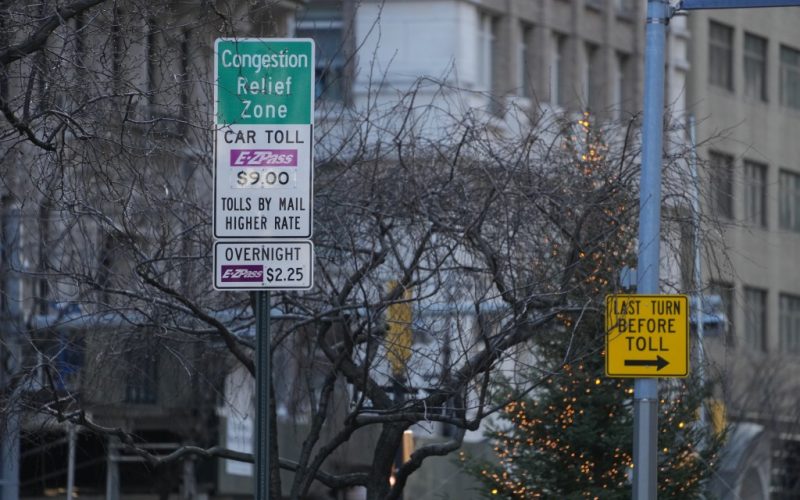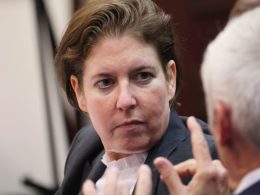The federal government is threatening to bring back New York City’s terrible traffic.
U.S. Department of Transportation Secretary Sean Duffy is attempting to rescind the contract for the Central Business District (CBD) Tolling Program — more commonly known as congestion pricing — demanding that the MTA and New York State end the program yesterday, April 20, or face potential funding cuts.
To her great credit, Gov. Hochul has steadfastly backed the program, which will have its fate determined in the courts after the MTA sued the feds to keep the program running.
Why bother? Because congestion pricing is working, finally breaking the nauseating, ear-splitting gridlock that has paralyzed the NYC region to the tune of $20 billion in congestion-related costs annually. Since the congestion relief program launched a bit more than 100 days ago, there have been 6 million fewer vehicles in the Congestion Relief Zone, an 11% decrease from 2024.
That’s been a boon for anyone driving into the city, with traffic speeds up by 15% in the CBD. Traffic at bridge and tunnel crossings is moving up to 30% faster than last year, saving up to 21 minutes per trip, an annual value of up to $1.3 billion in time savings. Bus, school bus and express bus speeds are up for riders, too.
Reduced traffic means the streets are safer, while even noise complaints have plummeted by more than 70%.
Before the program launched, alarmists and fearmongers predicted that business in the city would crater and traffic outside of Manhattan would become completely unmanageable. Neither has happened.
Broadway attendance is up 19%, restaurant reservations are up 5%, and retail sales have seen a $900 million boost. Even commercial real estate has rebounded while taxi trips have increased by 20%. The total number of people in Manhattan is up 7% over last year despite decreased traffic.
Traffic increases in Staten Island and the Bronx haven’t materialized. Traffic on the Verrazzano, Triborough, Whitestone, and Throgs Neck bridges has remained steady, while $330 million is coming for environmental mitigation.
So why does Duffy want to kill the program? First, he claimed that there is no way to drive into the zone for free without paying the toll and that it’s “elitist.”
What Duffy doesn’t understand is a $9 toll is almost nothing compared with the cost of parking in Manhattan, which is one reason why 90% of New Yorkers take the subway, bus, or train to get there and why only 1% of CBD workers who make less than $50,000 commute into the city by car.
Transit isn’t elitist; it’s the lifeblood of our city and region, and we couldn’t function without it. I get that’s far from the reality of Duffy’s Hayward, Wis., but from one Wisconsinite to another, it’s time to become proficient. The fate of more than five million daily riders is at stake, it’s not a reality TV show.
The other argument is that the program’s primary goal is raising capital funding for transit, not reducing congestion. Yet the Traffic Mobility Act of 2019, which authorized congestion pricing, clearly states both goals, as the exhaustive environmental review of the program described in explicit detail. Meanwhile, as anticipated, the program is on track to raise $15 billion when bonded.
So, what are New Yorkers getting for their toll money?
The long list includes 250 new all-electric buses and new subway and commuter rail cars. Making 23 subway stations accessible for people with disabilities. Fortifying the subways to be more resilient to flooding and severe weather. Modernizing signals for better and faster subway service on the B/D/F/M lines in Manhattan and the A/C in Brooklyn and Queens. Replacing and improving existing power systems and infrastructure to move toward a state of good repair and avoid another Summer of Hell of unsafe and unreliable service.
Yet Duffy — who doesn’t seem to know how much the tolls are — continues to threaten MTA funding if it skips his arbitrary deadline. So, what’s at stake?
The federal government gives nothing for day-to-day operations, but the MTA does receive more than $2 billion annually for capital improvements, primarily for repair work to keep the system functional and safe. Cutting these funds would harm transit riders while killing jobs across the region and the country in an industry that thrives on planning and despises risk.
Instead, if he wanted to make congestion relief and transit less elitist, we invite Duffy to support fare incentives to help New Yorkers ride. At PCAC, we have a bunch of ideas for doing just that.
Let’s focus on improving transit and keeping NYC traffic under control.
Fritsch is the associate director of the Permanent Citizens Advisory Committee to the MTA








